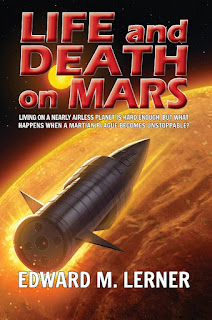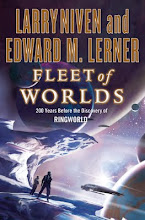As SF fans (and everyone following modern physics) know, under prevailing theory the matter and energy we can see and feel -- the stuff like
us -- is a mere 4% percent of the universe.
To explain the motion of stars within galaxies, and of galaxies within clusters,
dark matter is invoked.
That’s 22% percent more of the universe.
To explain the overall expansion of the visible universe,
dark energy is invoked, accounting for the remaining 74% of the universe’s content.
And most recently, some distant galaxies are seen to recede faster than dark energy can explain.
Dark flow is now described as the visible manifestation of stuff so distant that it falls outside the visible universe, but which exerts an influence (likely gravitational) on remote objects we can see.
In all three cases, physicists infer the existence, and speculate about the nature, of unseen stuff. It’s that, or revisit the foundations of physics -- our understanding of gravity, for example -- to reinterpret their findings. Newton’s model of gravity turned out to be incomplete. Einstein’s is too, still disconnected after most of a century from quantum physics.
It’s not unreasonable, at least to me, that a future model of quantum gravity will necessitate a new look at all this inferred, anonymous, dark stuff -- including a new look at how much of it is really there.
That’s one curmudgeon’s opinion ...
































